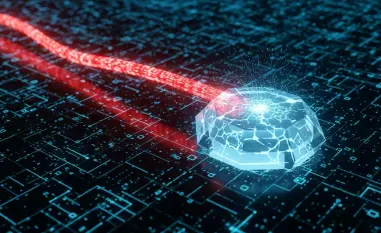Picture this: a global corporation awakens one morning to a chaos of leaked confidential files and breached client data. The question resounding in the boardroom is how a sophisticated cybersecurity system fell prey to such a major incursion. In a world where cyber threats are evolving at an unprecedented pace, traditional security models seem increasingly vulnerable. How can organizations adapt to safeguard their critical information against relentless adversaries effectively?
The Imperative of AI in Reinforcing Cybersecurity
As cyber threats gain complexity, surpassing the strength of conventional security mechanisms, the urgency for artificial intelligence (AI) in cybersecurity platforms becomes evident. Regulatory pressures are mounting, with policymakers advocating for the adoption of Zero Trust frameworks to counter these sophisticated attacks. Such frameworks become a tactical necessity for organizations striving for future-proof cybersecurity solutions, hence their heightened implementation throughout networks worldwide.
Transformation of Zero Trust by AI
Securing Identity and Access Management
AI’s contribution to identity and access management (IAM) within Zero Trust models is profound. It streamlines identity verification through biometric analysis, while adaptive authentication mechanisms are driven by behavior-based algorithms. For example, AI systems flag unusual login patterns, ensuring compliance with security protocols and preventing unauthorized access. The ability of AI to scrutinize and authenticate digital identities with precision is redefining security measures.
Enhancing Network and Application Security
AI’s deployment across network lines and applications signals a transformative shift in security paradigms. AI technologies have demonstrated prowess in detecting network anomalies, offering preemptive measures against potential threats. Case studies illustrate AI’s success in identifying and ceasing malware in its tracks, allowing for swift intervention that human capacity alone may fail to deliver. Such advancements redefine the parameters of network and application safeguards.
Revolutionizing Data Security and Policy Enforcement
The expansive data collected by organizations necessitates AI’s analytical capabilities for effective security oversight. AI provides real-time insights into vast datasets, adjusting access policies dynamically to counter emerging threats. Recent examples reinforce AI’s role in this domain, showcasing its ability to recalibrate strategies based on real-time data assessments—a boon for continuous policy enforcement and robust data security.
Expert Insights into AI’s Influence
Prominent voices in the field of cybersecurity have underscored AI’s critical impact on modern security frameworks. Experts like Ismael Valenzuela highlight AI’s capacity to enhance human intelligence rather than replace it, envisioning a dynamic synergy between AI and human intervention. Recent reports indicate an anticipated majority of enterprises incorporating AI-driven Zero Trust solutions, supported by anecdotal success stories from seasoned security professionals.
Implementing AI Effectively in Zero Trust Architectures
For organizations seeking to integrate AI into their security systems, a structured approach is mandatory. Foundational steps include establishing robust AI frameworks and incorporating machine learning models into existing infrastructures. However, despite AI’s formidable capabilities, human oversight remains indispensable to maintain ethical standards and strategic coherence. Embracing human-machine teaming models ensures security measures remain balanced, optimized, and responsive to complex threats.
AI’s integration into Zero Trust cybersecurity shifted the strategic landscape, presenting rich opportunities alongside new challenges. It enabled organizations to develop adaptive security measures that addressed those challenges with agility. While AI enhanced data analytics and fortified security protocols, it simultaneously required expert management to navigate the potential ethical and procedural concerns. The journey toward incorporating AI in cybersecurity signified a pivotal era in safeguarding digital frontiers, with a call for continuous innovation and collaboration among stakeholders.













